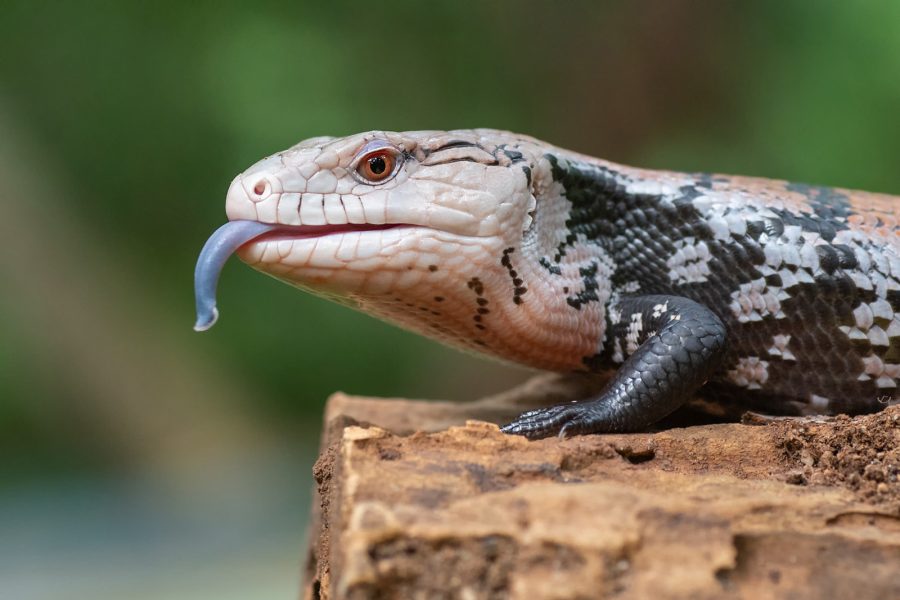If you’re on the market for a beginner-friendly lizard, you’ve probably heard all about bearded dragons and leopard geckos. While these are great options, did you know there are plenty of other unique lizards for a first time reptile owner? One of our top picks is the blue-tongued skink. Follow along as we show you why these skinks have become so popular and detail the care you’ll need to own one!
An Overview
Blue-tongued skinks are some of the largest variety of skinks in the world. They are easy to identify with their unique characteristics of the blue tongue, broad bodies, and short, stubby legs. There are some variations in base coloring, from rusty reds to ghost-like grays. Most will have thick stripes all down their bodies.
Blue-tongued skinks are gentle in nature and should not be difficult for a new reptile owner to handle. Additionally, potential buyers need to be aware that the lifespan is about 20-years or more and should plan accordingly. They are a long-term commitment!
These skinks also love exploring and are great at squeezing into tight spaces such as under the couch or behind the fridge, so be sure to keep an eye on them!
Feeding
One of the best parts of owning a blue-tongued skink is their wide variety of dietary options! They are omnivorous and will need both meat and plants for a healthy diet. Blue-tongued skinks enjoy soaking in water, so including a water dish is essential! Try to choose one large enough they can sit in and be sure to change the water frequently.
Meat should make up about half of an adult blue-tongued skink’s diet. This can range from raw eggs, crickets, lean beef, ground turkey, or even some brands of canned dog or cat food.
The other half of the meal plan should mostly include leafy greens. The best options for this are supergreens such as collard greens, mustard greens, and dandelion greens. Vegetables are also important, so be sure to include those. Fruits should only make up a small portion of the diet and are best saved for treats.
Though your skink can handle a wide variety of foods, if you’re unsure about any food, be sure to either research it or don’t use it.
Photo Credit: The Pet Enthusiast
Housing
Since blue-tongued skinks grow to be about 20 inches, you will need a fairly large enclosure. Aim for at least a 40 gallon tank, but bigger is always better. They are highly active ground dwellers, so plenty of moving around space is optimal. There’s no need to include climbing materials, but you should provide them with some places to hide.
Blue-tongued skinks also enjoy burrowing, so a thick layer of soft substrate is best. You can use reptile safe soils, mulch, coconut husks, or other bedding that also retains moisture. Include about 4 inches for digging.
You will need to include both a heat lamp and UVB lamp for your skink. The exact temperatures will vary depending on the variety of blue-tongued skink you own, so be sure to research their exact needs. Using a timer and setting the lights to match the sun is great for syncing your skink to their natural cycles. Also include a designated basking spot by placing a stone under the heat lamp. Never use an electrically heated rock or pad – these are notorious for burning lizards!
The world of reptile ownership is one that has been expanding rapidly over the last decade. With every year, we’re discovering new varieties of lizards that make fantastic pets. Blue-tongued skinks have skyrocketed in popularity over the last few years and it’s easy to see why. We highly recommend these docile skinks for beginners, but always make sure you research and know exactly what you’re going to need before purchasing a pet!





